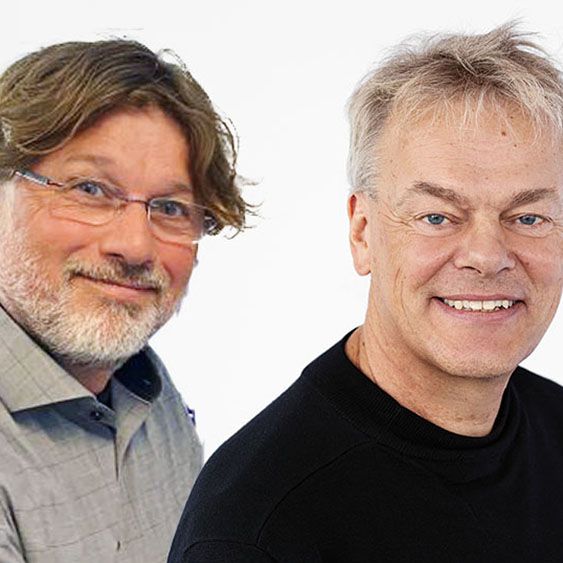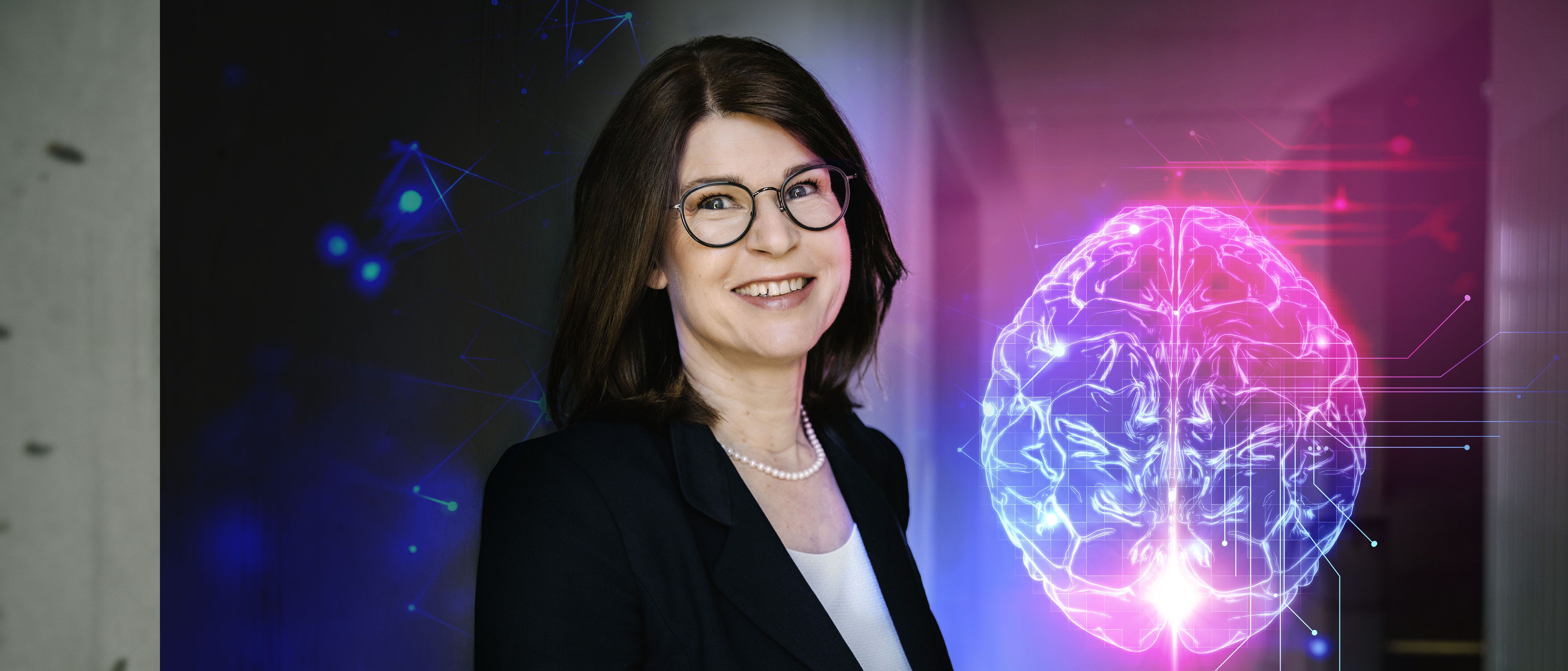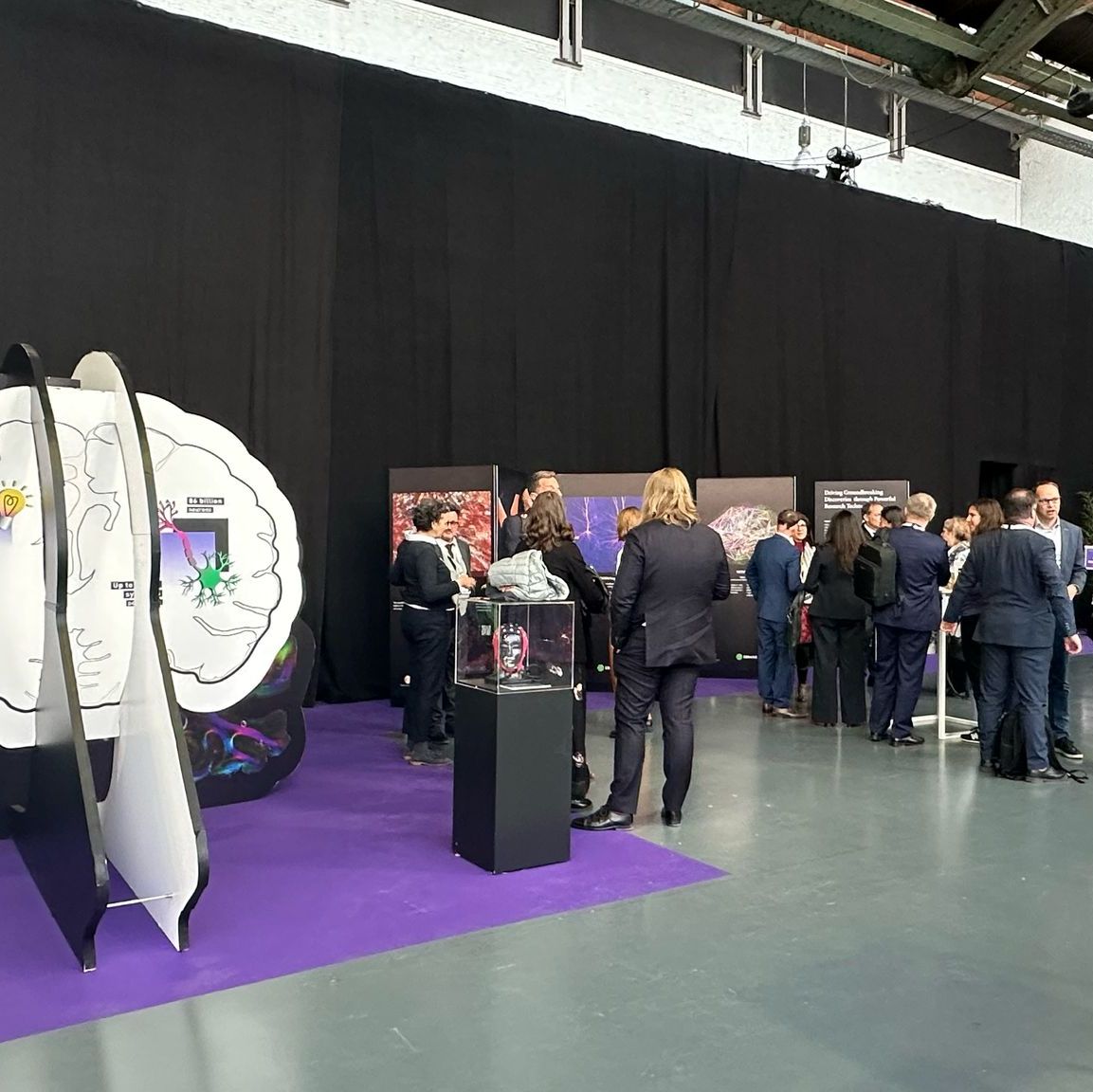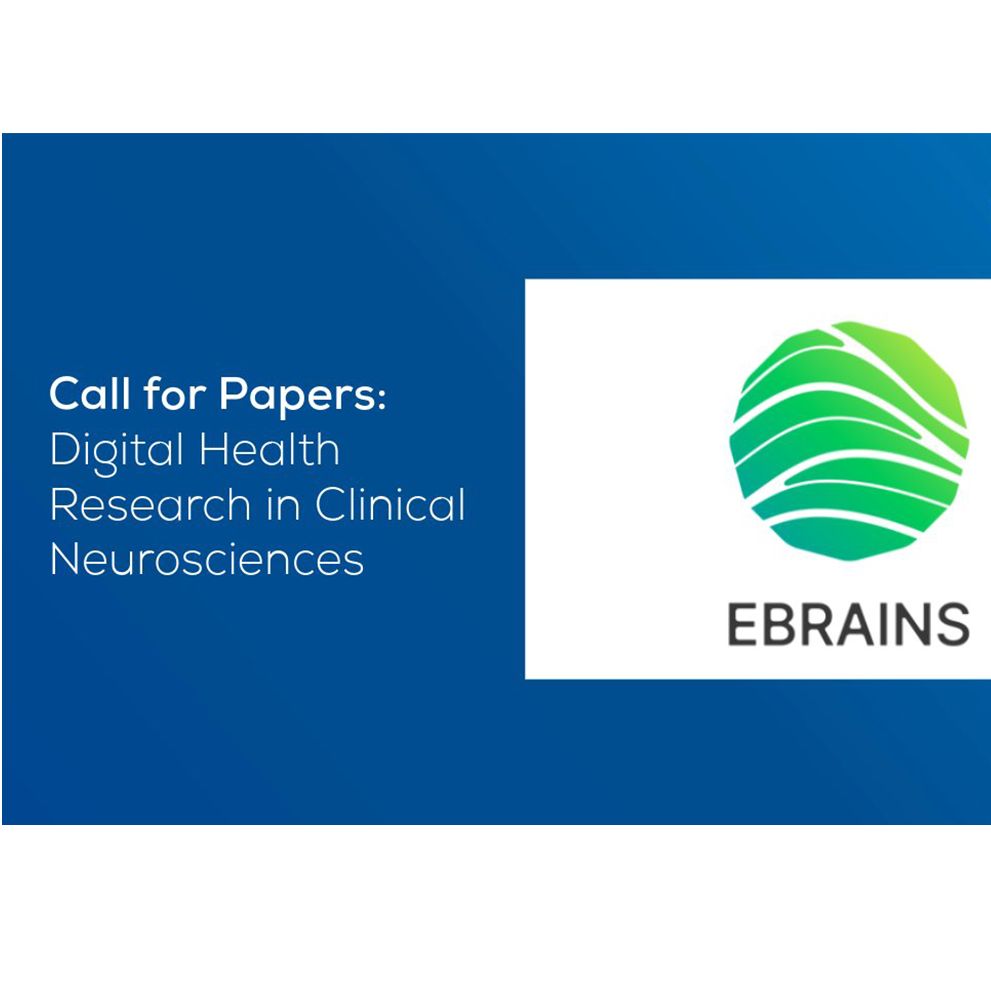
A New Digital Era

Step into the future: Prof. Katrin Amunts (INM-1) has helped to strongly advance the digitalisation of brain research together with JSC – at Jülich and in Europe. | Mareen Fischinger / Forschungszentrum Jülich
Prof. Katrin Amunts has always been fascinated by the brain. “It is one of the most complex systems of all, comparable to the universe. It not only has around 86 billion neurons, but also an almost unimaginable number of connections and different states that it can assume*,” enthuses the director of INM-1, who dedicated herself to the topic of the brain early on in her medical studies. “Brain research back then was completely different to today,” recalls Amunts. In 1999, she joined Prof. Karl Zilles at FZJ as a postdoc to help establish the research topic here. She had just spent four years creating novel maps of two brain areas of the language centre. “But the neural network for language in the brain is much larger. To really make progress, I actually had to know the whole brain as well as these two brain areas,” says Amunts. “However, this was not possible with the state of technology at the time and the complex mapping process.”
* It is estimated that 2 to the power of 10 to the power of 15 theoretical states are possible in the human brain at any one time. That is equivalent to a figure with about a third of a quadrillion zeros.
A leap into the modern age
Today, 25 years later, brain research has come a long way: “We already know many networks that are crucial to our thinking and behaviour. And there are very precise 3D maps for more than 200 brain areas – and in a few years we will have the entire brain covered,” Amunts is pleased to report. “Most of these areas were depicted for the first time ever at Jülich.” But where does this huge leap in knowledge come from? The answer is digitalization. The digital 3D brain atlas, which Amunts developed at Jülich over two decades, made many things possible that previously seemed completely unthinkable: “The Julich Brain Atlas was the first to combine a wide variety of high-resolution 3D brain maps with countless tools and interactive functions.”
Amunts’ atlas formed the core of the European digital infrastructure EBRAINS, which researchers have been able to use worldwide since January 2024. Crucial junctures in the digital revolution of brain research have been imaging techniques and, increasingly, AI. “Our work requires images and maps of the brain that are as accurate as possible.” From 1999, Amunts and Zilles used imaging and statistical methods for microscopic mapping and contributed probability maps to an international consortium on human brain mapping. “That was the first step into a new digital age.”
Difficult beginnings
But as the image files got bigger and bigger, the volumes of data grew and computers reached their limits. INM then ventured into supercomputing for the first time in 2011 through the BigBrain project. “This interdisciplinary collaboration was still very new in our field of research at the time,” recalls Amunts. In 2012, she therefore teamed up with JSC director Prof. Thomas Lippert and Prof. Markus Diesmann from what is now IAS-6. To bring neuroscience and supercomputing closer together, they launched a crucial Helmholtz project** in 2013. This was followed by a joint Simulation and Data Lab (SDL), which served as an important interface. “All of this helped to bring brain research problems to large computing machines,” says Amunts. “Because suddenly we had to take a completely different approach. That was hard pioneering work for both sides. But looking back, we helped to usher in a new era at Jülich.”
** The Helmholtz project “Supercomputing and Modeling for the Human Brain” was later developed further as a joint lab.
Timing is everything!
It was no coincidence that INM and JSC, and in turn neuroscience and computing, were brought closer together at this time: “That was important in order to have a chance in the rigorous selection process for the two EU flagship projects planned at the time, with unprecedented amounts of funding,” recalls Amunts. And these efforts were successful, as the Human Brain Project (HBP), ultimately worth over € 600 million, was launched in 2013. The timing was crucial back then: “Neuroscience was far enough along to start to bring together the different levels of brain organization: from molecules, individual cells, and microcircuits to large networks and brain areas,” says Amunts. “But also supercomputing had a long way to go to be able to cope with our huge data sets and highly complex tasks.”
A new generation
Looking back, the HBP was hugely fortuitous for European brain research, says Amunts. “The brain is so complex that until then its research had been spread across many sub-disciplines. Whether it be brain research, medicine, robotics, or psychology, in the HBP we systematically brought together the most diverse worlds for the first time throughout Europe and combined them with computing. This is how we have learned to discuss and work together over ten years. Because ultimately, nobody can do everything on their own, but working together we can all do more.”
Amunts believes this steadily growing international cooperation beyond specialist disciplines is one of the greatest successes of the EU project, which was completed in 2023. “This also made it possible to train a new generation of researchers who work precisely at these interfaces between neuroscience, medicine, computing, and technology.” Probably the most visible success, however, remains digital brain research itself: “We continue to drive this forward in the new EU project EBRAINS 2.0, with artificial intelligence becoming increasingly important in this field,” says Amunts. “Digitalization will continue to open many new doors in brain research in future.”
“The step from a small computer to a very large computing machine was huge for us – like driving a small car for years and suddenly being put in a Formula 1 car.” – Prof. Katrin Amunts (INM-1)
Originally published in the employee magazine "intern" of Forschungszentrum Jülich.
Author: Hanno Schiffer
News & events
All news & events
- News04 Apr 2025

- News03 Apr 2025

